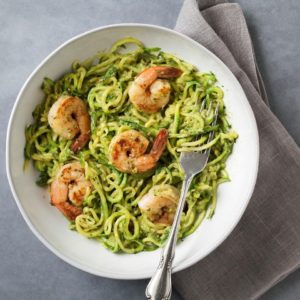Celiac Disease and You
Celiac Disease is a serious Autoimmune disease, where the consumption of gluten leads to inflammation of the small intestine. The body is unable to break down the gluten. Gluten is found in wheat, barley and rye. What is gluten? It is the protein in grains that is responsible for the elastic texture of dough. Celiac disease is hereditary, which means if you have a first degree relative with Celiac Disease, you should pay attention to symptoms. 1 in 10 people with a first degree relative with Celiac Disease have the risk of developing the disease. What are some of the symptoms of Celiac Disease?
- Gas and bloating
- Fatigue
- Weight loss
- Chronic Diarrhea
- Brain fog
- Delayed growth
- Pale, bad smelling, or fatty stool (oil skimming bowl after movement)
- ADHD
If you suspect that you may have celiac disease, you should not just go on a gluten free diet. You need to get tested! How do you do that?
- Tissue Transglutaminase Antibodies (tTG-IgA)-You must not be gluten free when you take this blood test. It is 98% accurate but it can have both false positive and false negative results.
- Colonoscopy or endoscopy-A biopsy of the small intestine along with blood work can help rule out the false negative/positive results.
- IgA Endomysial antibody (EMA): This test is very expensive and is used for only very difficult to diagnose cases.
- Total serum IgA: This might be the first test your doctor orders before doing the tTg-IgA test.
- Deaminated gliadin peptide (DGP IgA and IgG): One more blood test the doctors can use to help diagnose Celiac Disease.
There is hidden gluten in many foods, so how do you know what to avoid if you have Celiac Disease? It will be very important that you learn how to read labels and become a good detective. This is a list of foods you MUST not consume:
- All wheat products: wheat starch, bran, germ
- durum
- emmer
- semolina
- spelt
- farina
- farro
- graham
- Kamut
- einkorn wheat
- Rye
- Barley
- Triticale
- Malt in various forms including: malted barley flour, malted milk or milkshakes, malt extract, malt syrup, malt flavoring, malt vinegar
- Brewer’s Yeast
- Fu
- Matzo
- Couscous
- Seitan
- Soy Sauce
- Oats that are not certified gluten free
There are many foods that can contain gluten such as: Pasta, noodles, crackers, soups, lunch meats, candy, granola bars, certain dried seasoning and spices….the list goes on, so you will need to investigate labels. It is also important to note that some cosmetics, over the counter vitamins and supplements, and medications can contain gluten, so always ask. There are great Apps that can help you decipher what foods to avoid:
- The gluten detective
- Gluten Free-Allergy Free Marketplace
- Gluten free scanner
- Find me gluten free
- Allergy eats
It is VERY important not to cross contaminate if you have Celiac Disease. This means that anything that comes into contact with gluten (utensils, pots, pans, toasters, cutting boards, containers, fryers, etc.) must not be used. Learn to mark and separate your non gluten kitchen items. If you have Celiac disease, you cannot consume even a crumb of gluten.
Newly diagnosed patients may have nutrient deficiencies. It is important to meet with your physician and an RD to make sure you are eating a well balanced diet and have the proper nutrients. Some of the possible nutrient deficiencies are:
- Fiber
- Iron
- Calcium
- Magnesium
- Zinz
- Folate
- Niacin
- Riboflavin
- Vitamin B12
- Vitamin D
If left undiagnosed or untreated (not following a gluten free diet), Celiac Disease can lead to the development of other autoimmune disorders like Type I diabetes and multiple sclerosis (MS), dermatitis herpetiformis , anemia, osteoporosis, infertility and miscarriage, neurological conditions, short stature, and intestinal cancers, so it is very important if you suspect Celiac Disease to see your doctor as soon as possible. You can lead a very healthy life with Celiac Disease, you just need to know the facts and get the help of an RD!
Zucchini Noodles with Avocado Pesto & Shrimp
From: EatingWell.com, January 2017
Ingredients 4 servings
5-6 medium zucchini (2¼-2½ pounds total), trimmed
¾ teaspoon salt, divided
1 ripe avocado
1 cup packed fresh basil leaves
¼ cup unsalted shelled pistachios
2 tablespoons lemon juice
¼ teaspoon ground pepper
¼ cup extra-virgin olive oil plus 2 tablespoons, divided
3 cloves garlic, minced
1 pound raw shrimp (21-25 count), peeled and deveined, tails left on if desired
1-2 teaspoons Old Bay seasoning-it is gluten free!
Preparation
Prep 35 m
Ready In 35 m
Using a spiral vegetable slicer or a vegetable peeler, cut zucchini lengthwise into long, thin strands or strips. Stop when you reach the seeds in the middle (seeds make the noodles fall apart). Place the zucchini “noodles” in a colander and toss with ½ teaspoon salt. Let drain for 15 to 30 minutes, then gently squeeze to remove any excess water. Meanwhile, combine avocado, basil, pistachios, lemon juice, pepper and the remaining ¼ teaspoon salt in a food processor. Pulse until finely chopped. Add ¼ cup oil and process until smooth. Heat 1 tablespoon oil in a large skillet over medium-high heat. Add garlic and cook, stirring, for 30 seconds. Add shrimp and sprinkle with Old Bay; cook, stirring occasionally, until the shrimp is almost cooked through, 3 to 4 minutes. Transfer to a large bowl. Add the remaining 1 tablespoon oil to the pan. Add the drained zucchini noodles and gently toss until hot, about 3 minutes. Transfer to the bowl, add the pesto and gently toss to combine.
Nutrition information
Serving size: 1¾ cups each
Per serving: 446 calories; 33 g fat(5 g sat); 7 g fiber; 16 g carbohydrates; 26 g protein; 112 mcg folate; 159 mg cholesterol; 7 g sugars; 0 g added sugars; 1,144 IU vitamin A; 55 mg vitamin C; 141 mg calcium; 2 mg iron; 713 mg sodium; 1,271 mg potassium
Nutrition Bonus: Vitamin C (92% daily value), Folate (28% dv), Vitamin A (23% dv)
Carbohydrate Servings: 1
Exchanges: 6 fat, 3 lean protein, 1½ vegetable




